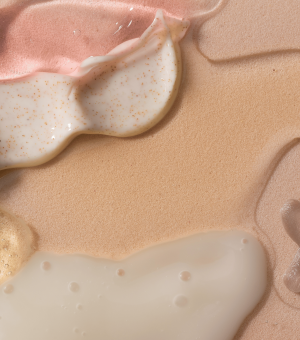Children's skin is often a source of anxiety for new parents who are worried about the health of their little one. A few pimples, a small bump, or even redness and itching: it doesn't take much to make the child (and his parents!) Uncomfortable and cause concern.
Dermatologists are able to diagnose and treat as many as 3,000 different skin problems. Here are some of the skin conditions most often encountered in dermatological clinics and some tips on how to react to them.
1. Diaper dermatitis: to watch out for
Diaper dermatitis, also called diaper rash, is very common in toddlers. It is easily identified by the presence of red and painful lesions on the buttocks and thighs of the child. Diaper rash is caused by prolonged contact with a soiled diaper. The problem is usually not serious, but it can cause pain. Changing the diaper frequently will help ensure that the genitals stay dry.
2. Eczema: to watch out for
Patches of dry, itchy skin can develop on the limbs and face of young children. This is generally referred to as eczema, a chronic uncomfortable disease that can appear as early as 6 months of age. It is recommended to consult a dermatologist at the first symptoms to avoid the development of related conditions like asthma. The professional may prescribe an anti-inflammatory treatment to control the plaques and soothe the itching. The parent can also apply an unscented cream daily to protect and hydrate the skin.
3. Seborrheic dermatitis: to watch out for
Newborns sometimes develop yellowish scabs on the scalp. This phenomenon called seborrheic dermatitis or "hat" is a common and usually harmless condition. It does not require medical treatment. It is suggested to wash the baby with a mild shampoo and rinse the head with lukewarm water. If the scabs persist, the parent can see a doctor for salicylated mineral oil to loosen the scabs.
4. Molluscum contagiosum: consult
This skin condition caused by a virus is contagious, but harmless. It is characterized by small, rounded bumps resembling smooth pearls that are often found on the face, trunk or limbs. It can take up to two years for symptoms to go away on their own. A dermatologist can prescribe treatments and explain the technique for curating these lesions.
5. Infant acne and milia: to watch out for
Often confused, infant acne and milia (plural milia) are two distinct skin conditions, but the symptoms are similar. Acne is caused by maternal hormones and produces reddish pimples, whereas milia is caused by a blockage problem and looks like a small bump that is whitish in color. Both of these improve over time, but in both cases, it is important not to alter the skin to avoid causing long-term scarring. A dermatologist can prescribe treatment in severe cases.
6. Heat buttons: watch out for
Wanting to protect him from the cold, parents sometimes bundle their child up to the point where small rashes appear on his skin. These often reddish, painless pimples are mild and go away on their own within a few days. To limit the spread and make their child more comfortable, parents should adapt the choice of clothing to the room temperature.
7. Frostbite: consult without delay
Frostbite occurs when the skin is exposed to the cold or wind for a long time. In case of frostbite, you can warm the skin with lukewarm water without rubbing. If the affected area remains numb or unresponsive after being rewarmed, or if it retains a whitish tint, a doctor's advice will be needed.
8. Sunburn: consult according to severity
Sun protection is required at all times, especially in young children whose sensitive skin reacts easily to UVA and UVB rays. Protection is preferred with anti-UV clothing and mineral screens (based on titanium dioxide or zinc). In the event of minor sunburn, so a simple redness on the skin, apply a moisturizer regularly and monitor the evolution of the affected area. If small blisters appear on the skin, it is a 2nd degree burn that requires immediate medical attention.
Dre Émilie Bourgeault, dermatologist at dermago.ca
Post written in February 2021 for the blog Maman pour la vie



